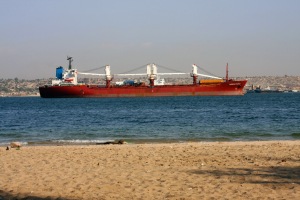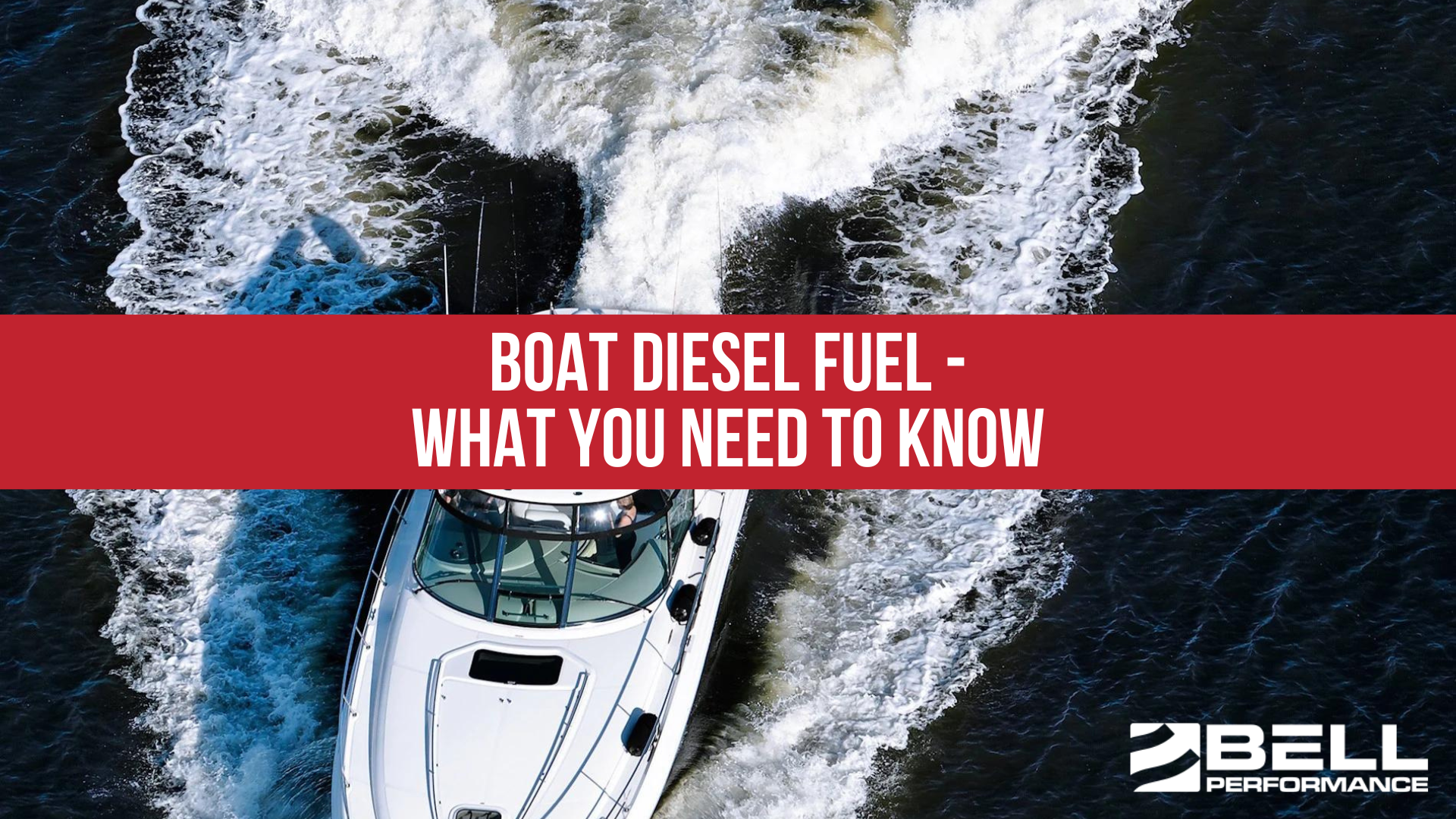The Key Bridge Disaster - What Happens Next (And Was The Fuel To Blame?)
One of the nation’s worst infrastructure disasters now threatens to put a major snarl in our country’s complex web of shipping. On Tuesday, the...

Summarizing what they know thus far... They recovered the ship’s “voyage data recorder” (VDR), sometimes referred to as the black box because of its resemblance in function to the black box found on airplanes. From the data pulled from the recorded, NTSB officials have been able to start piecing together a clearer timeline of the disastrous events.
Click here for our first post on the Key Bridge Disaster.
First, we have to go to the starting point. The Dali was a pretty large ship in its own right - almost 1,000 feet in length, which means that if you stood it on its end, it would be almost as tall as the Eiffel Tower. Fully loaded, it could carry about 10,000 20-ft shipping containers (those rectangular metal boxes you see). But for this voyage, it was only loaded with about 4,500 of them. All that may sound like a lot, but those figures don’t make it close to one of the largest ships of its type in use - the biggest container ships can carry more than 24,000 containers.
So the Dali starts in the Baltimore harbor, at the Seagirt Marine Terminal. Among the 4,500 containers loaded onto it, 56 of them contain “hazardous materials” - different kinds of chemicals along with lithium-ion batteries. This part is not unusual, as it is commonplace for a large container ship like it to have at least some hazardous goods in its cargo. The Dali also starts the journey loaded with 1.8 million gallons of diesel fuel to enable it to make a 27-day voyage from Baltimore to its final destination in Sri Lanka.
Using information from the ship’s voyage data recorder, or VDR, the NTSB has pieced together a rough timeline of events leading up to the crash. This is what they’ve determined thus far.:
About 12:39 a.m.: The ship leaves the Seagirt Marine Terminal.
1:07:00 a.m.: The ship has entered the Fort McHenry Channel, headed in the direction of the open sea at about 9 miles per hour.
1:24:59 a.m.: Alarms are sounding on the ship’s bridge, as picked up by the audio recording. At about the same time, the VDR system stops recording the data from the ship’s system, but it still keeps recording audio. Investigators think this anomaly is because the audio recording system either uses or has switched to, a different power source. Based on this and other pieces of information, we can infer that by this time, the ship has “lost power” like they keep talking about.
1:26:02 a.m.: The VDR systems resume recording the ship system data (perhaps a backup system. During this time, steering commands and orders regarding the rudder were captured on audio.
1:26:39 a.m.: The ship’s pilot makes a radio call for tugboats in the vicinity to help the vessel. Around this time, the pilot association dispatcher contacted the Maryland Transportation Authority duty officer about the blackout, according to transit authority data.
1:27:04 a.m.: The pilot ordered that the ship’s port anchor be dropped (which answers some critics initial question 'Why didn't they just drop anchor?') and issued additional steering commands.
1:27:25 a.m.: The pilot issued a radio call over the VHF radio, reporting that the vessel had lost all power and was approaching the bridge. Around this time, the transit authority duty officer radioed two of its units — one on each side of the bridge — that were already on the scene and ordered them to close traffic on the bridge. All lanes were then shut down. This undoubtedly saved many lives, given that there would be just 90 seconds from the call until disaster on the bridge.
Around 1:29 a.m.: The ship’s forward speed was recorded at just under 8 miles per hour. From this moment until around 1:29:33, the VDR audio recorded sounds consistent with a crash at the bridge. MDTA dash cameras show the bridge lights extinguishing.
1:29:39 a.m.: The pilot radioed the US Coast Guard to report the bridge was down.
How long will the investigation take? The full one will take 12-24 months, but the NTSB says they will have a preliminary report out in 2-4 weeks.
There are at least a couple of big outstanding questions remaining - one looking forward and one looking back.
Looking forward, it’s all about "how are they going to get this mess resolved so the transportation & logistics system gets back to normal? " We mentioned earlier that they put immediate plans in place to re-reroute ships and cargo to New York and New Jersey for the time being. But they’ve got to get that bridge cleared. Over the weekend, they worked on cutting the bridge up into pieces that could be hauled away. Due to its sheer size, that process is literally going to take months. They have three massive cranes (and a fourth one coming Monday) that are loading the cut pieces onto barges to be hauled away. The immediate goal of all this is to at least create a clear channel of access to the harbor so essential ships can go in and out.
In addition, there’s the important question of how they’re going to clean everything else up - both cargo-related and economic-related. Economically, the port employs about 8,000 workers who don’t really have income until some semblance of normalcy can be restored. Not to mention all the port-related businesses (for example, companies near the port that take emptied cargo containers, clean them up, and recertify them for use the next time) that are, essentially, shut down until that time. The government has sprung into action with packages of economic assistance to try and help some of these folks who really need it.
But going back to the cargo on the ship, there’s a bunch of stuff lying at the bottom of the harbor that needs to be removed. And lest we forget, there are four unfortunate souls that they are still looking for. All of that process has been hampered in the beginning by dangerous weather and water conditions that make searching difficult if not untenable. This also doesn’t take into account the containers of hazardous chemicals that went into the water. You’re not going to send divers down into chemically-contaminated water.
Looking back, perhaps the biggest question is, since we know the Dali lost power, what caused it? It’s not really clear what was supposed to be powering what, in this situation. We’ve got the emergency recording systems that pull power from something. We’ve got the propulsion and steering that pull power from something else. They’re saying the propulsion system lost power - what caused that to happen? Luckily, the recording system was able to keep power (even though the part that logged the ship’s data stopped recording for some time).
It appears whatever affected the propulsion system is the likely primary cause of this disaster. We’re interested in the possible fuel angle because, if it does turn out to be the case that contaminated fuel was the primary culprit, then not only is someone in a whole lot of trouble, but it becomes an example to everyone out there who manages fuel - one that’s impossible to overlook. We’ve been saying for years that the downside to fuel contamination can be catastrophic. If that turns out to have played a role here, look out.
Until then, we’ll have to let the investigators put the puzzle pieces together. Definitely more to come, later.
One of the nation’s worst infrastructure disasters now threatens to put a major snarl in our country’s complex web of shipping. On Tuesday, the...

The market for marine fuel additives on the consumer side is a sizeable one, numbering in the billions of dollars. The vast majority of the...

Most folks don’t have the time or inclination to keep on top of the numerous trends in the marketplace that may impact their wallets. Remember the...